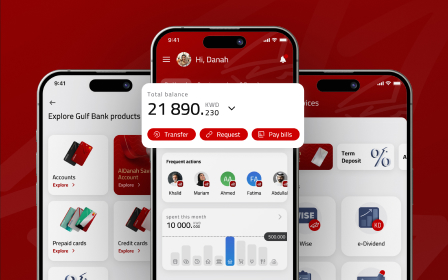What’s Driving SaaS Growth in 2025? Strategies, Trends, and Insights

- Trends Driving SaaS Growth
- Advanced AI and Automation Integration
- Enhanced Data Integration and Management
- Advanced Personalization and Customer Experience
- Focus on Customer Success Metrics
- Rise of Micro SaaS Solutions
- Low-Code and No-Code Revolution
- Environmentally Conscious SaaS Practices
- Subscription Flexibility with Usage-Based Pricing
- Strategies to Capitalize on SaaS Growth Trends
- Conclusion
As the SaaS industry moves forward in 2025, innovation and agility continue to drive success.
This article explores key trends driving the SaaS growth and practical strategies to capitalize on them.
From advanced AI integration to hyper-personalized customer experiences, SaaS companies must adapt to a rapidly evolving landscape to remain competitive.
Let’s review the trends to consider to meet the SaaS growth objectives in 2025.
Trends Driving SaaS Growth and Expansion in 2025
As competition intensifies, companies must stay ahead by leveraging data-driven strategies and refining their product experiences.
Let’s explore the key trends that will define SaaS growth in 2025 and how businesses can adapt to stay competitive.
Advanced AI and Automation Integration
Artificial intelligence (AI) has shifted from being a standout feature to an industry standard, shaping how SaaS products evolve. Reflecting on our work with AI-driven products in 2024, we’ve gathered key lessons and best practices — you can explore them here.
In 2025, AI will not just automate routine tasks but also transform customer interactions through advanced analytics. AI will enable SaaS platforms to offer predictive insights, dynamic feature recommendations, and personalized engagement at scale. This evolution will enhance operational efficiency while deepening user engagement.
Did you know that:
- Zendesk’s AI bots resolve up to 80% of customer queries autonomously, significantly reducing response times.
- Salesforce Einstein uses predictive analytics to help sales teams prioritize leads and close deals faster.
- A McKinsey study estimates that businesses using AI for customer personalization will achieve 5–15% higher revenue by 2025 compared to competitors that don’t adopt AI, fueling SaaS growth.
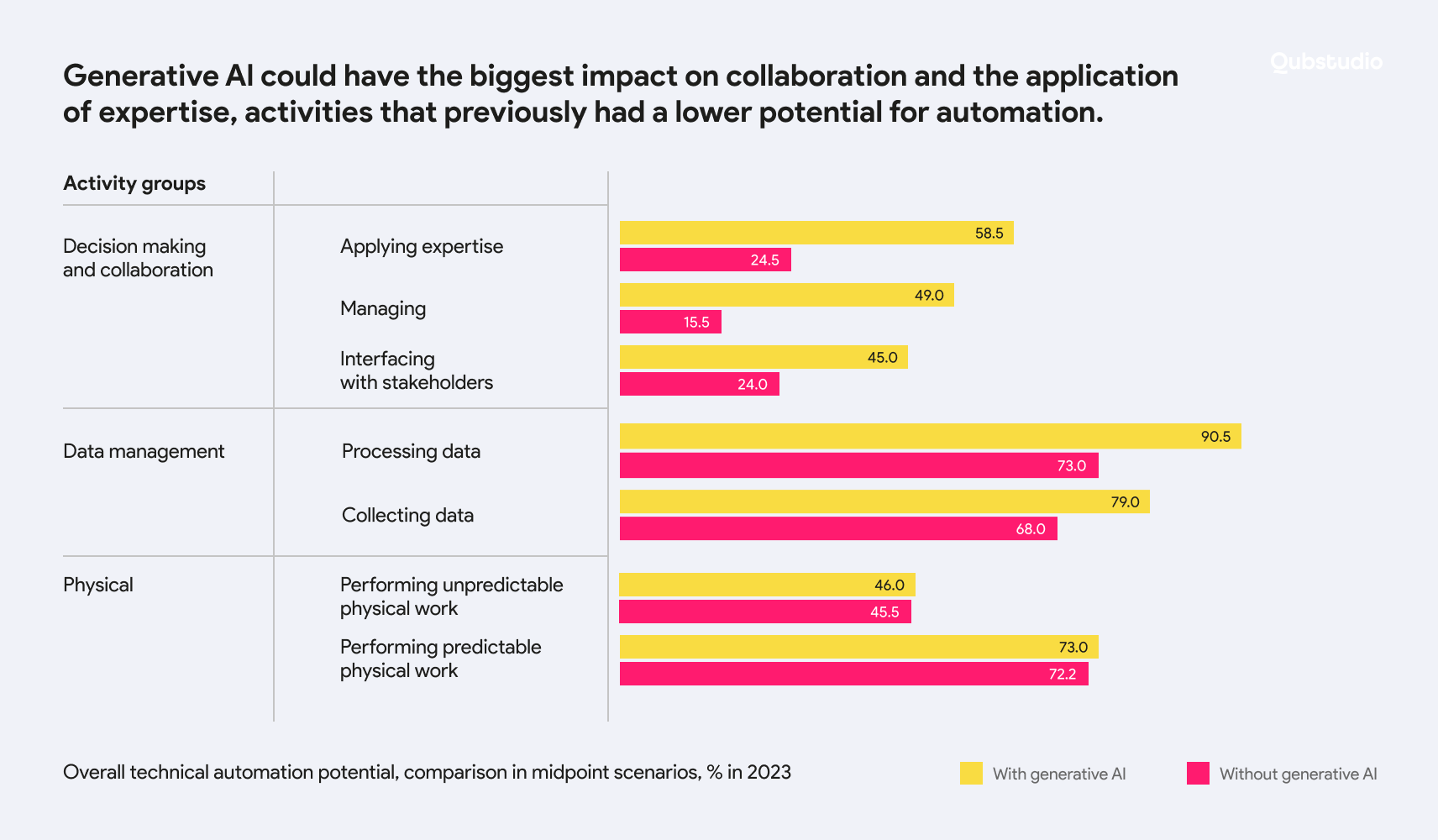
Enhanced Data Integration and Management
Seamless data integration from various sources, such as social media interactions, CRM tools, and in-app user behavior, will be essential among SaaS marketing trends for creating unified customer views and boosting SaaS growth. This holistic approach will help SaaS companies identify trends, pain points, and opportunities for growth.
Example: HubSpot’s CRM aggregates data from email campaigns, sales calls, and customer interactions into one dashboard, improving lead conversion rates by 68% as of 2024 and significantly boosting SaaS growth.
Advanced Personalization and Customer Experience
Personalization will evolve to deliver experiences uniquely tailored to individual users.
SaaS platforms will leverage user data to customize onboarding, product recommendations, and ongoing support. AI can predict user needs and recommend features dynamically.
Hyper-personalized onboarding paths can improve activation rates, ensuring users quickly realize your product’s value.
Focus on Customer Success Metrics
Demonstrating a clear return on investment (ROI) through customer success initiatives will become a top priority for SaaS growth strategies and for the SaaS revenue growth in particular. SaaS providers will rely on metrics like Net Promoter Score (NPS), Customer Satisfaction Score (CSAT), and Customer Effort Score (CES) to measure and showcase the impact of their efforts.
Satisfaction, retention, and engagement are among the key metrics that organizations typically evaluate. While these metrics are valuable, they often fall short in offering actionable insights that drive behavioral changes or inform strategic investments.
As experience-focused roles become more influential across the organization, leaders must adopt more comprehensive frameworks to ensure alignment and effective communication with other departments.
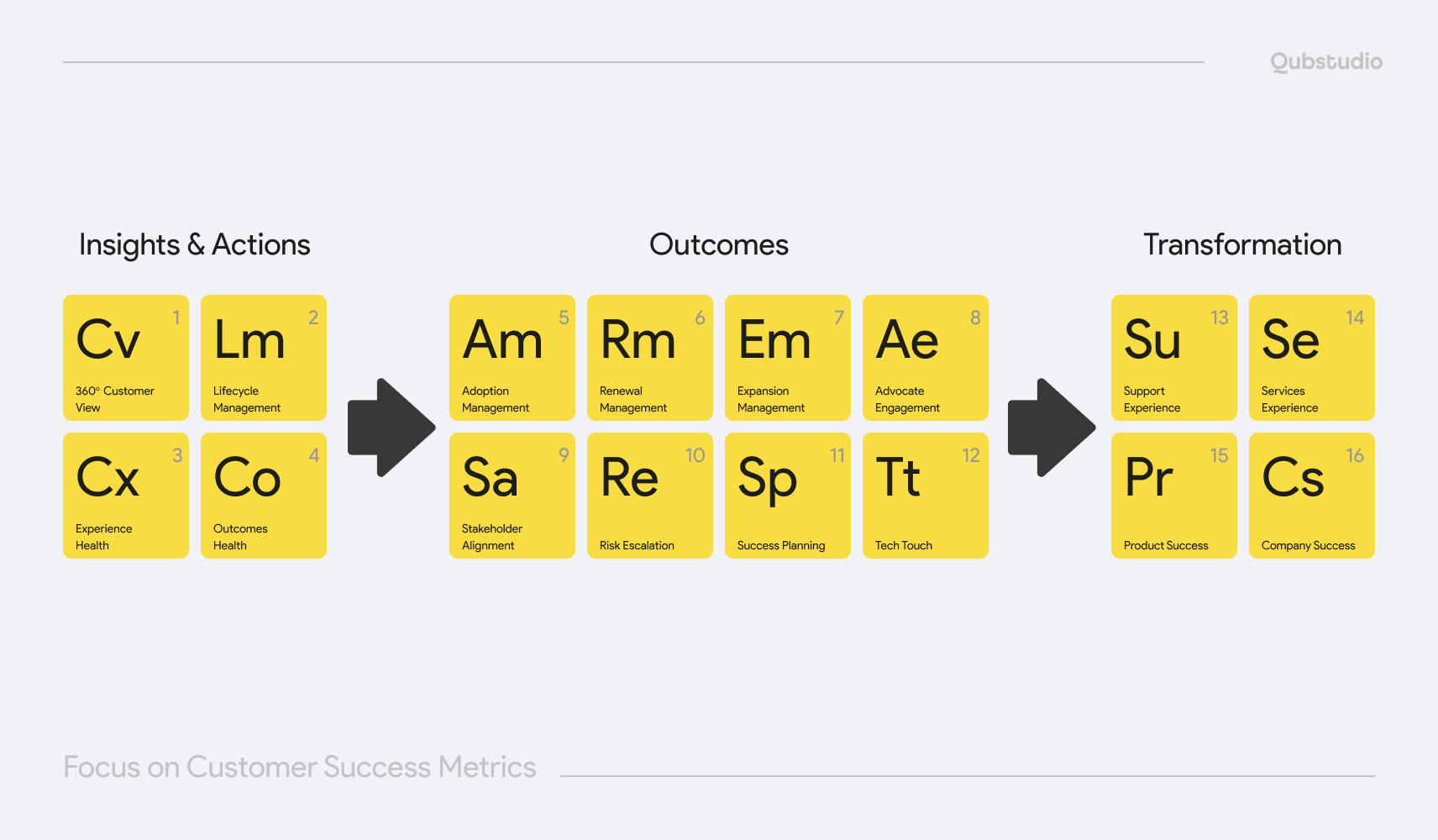
This framework outlines the key stages and metrics of Customer Success, guiding how companies can turn customer insights into meaningful outcomes and long-term value.
The Insights & Actions stage gathers client data and acts on it, like visualizing client interaction health in the Experience Health (CX) Element.
The Outcomes stage involves cross-department collaboration, such as executing renewals in Renewal Management (RM), scaling touch points in Tech Touch (TT), and turning client successes into advocacy in Advocate Engagement (AE).
The Transformation stage broadens collaboration to enhance client outcomes, like prioritizing client requests in Product Success (PR) and focusing on strong client experiences in Services Experience (SE).
Ultimately, it shows how a strategic approach to managing customer relationships leads to stronger products, better experiences, and sustainable business growth.
Rise of Micro SaaS Solutions
The development of niche, specialized SaaS products—commonly referred to as Micro SaaS—will accelerate. These products focus on solving specific customer problems within narrow segments, delivering high-value solutions.
Micro SaaS refers to a smaller, highly-focused SaaS business designed to serve a specific niche or market segment. While it shares the subscription-based model of traditional SaaS, it differs in scale and operation. Typically run by an individual or a small team, micro SaaS businesses cater to a limited user base and often thrive without relying on external funding or large-scale infrastructure, which makes it one of the most excellent SaaS growth strategies.

Low-Code and No-Code Revolution
The demand for low-code and no-code platforms will continue to grow, empowering non-technical users to create applications and workflows without extensive coding knowledge.
No-code platforms enable rapid application development, helping businesses launch new features and solutions more quickly. This speed provides a competitive edge in today’s fast-paced market.
By equipping non-developers with the tools to build and adjust applications, these platforms reduce reliance on IT departments. This democratization of software development encourages innovation and allows teams to operate with greater autonomy.
Businesses benefit from significant cost savings by minimizing the need for specialized developers. These savings can be redirected to other priorities, such as scaling marketing efforts or enhancing customer acquisition strategies.
Environmentally Conscious SaaS Practices
Sustainability will emerge as a core value, with SaaS companies focusing on eco-friendly practices like energy-efficient data centers. B2B SaaS growth strategies for the upcoming year must take sustainability compliance into account. Ассording to predictions by IDC:
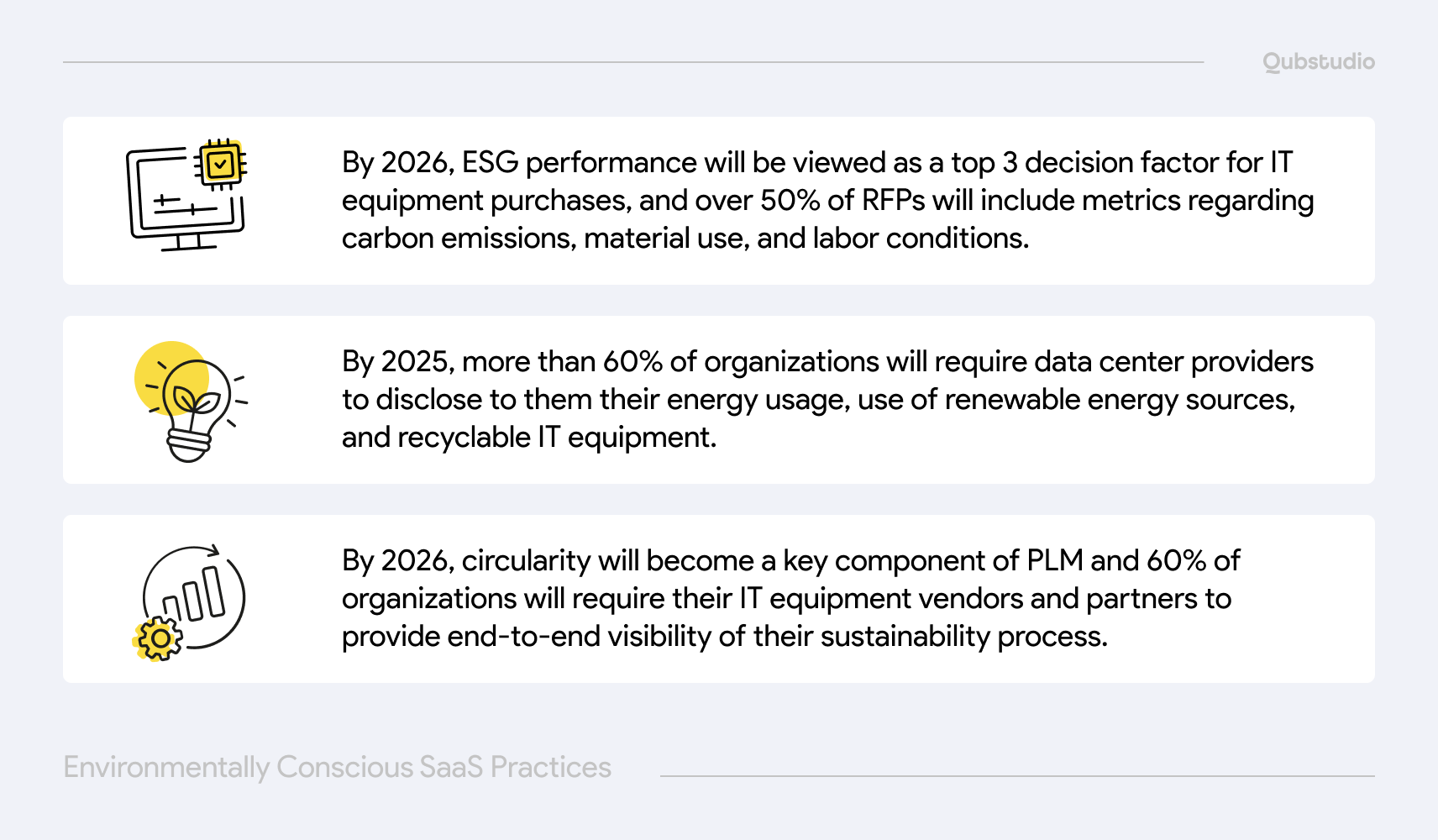
As these trends take shape, businesses must embed sustainability into their SaaS growth strategies to stay competitive and compliant.
Subscription Flexibility with Usage-Based Pricing
Usage-based pricing models, where customers pay based on actual usage, will gain popularity among the promising SaaS growth strategies.
For example, Twilio’s flexible pricing model drove a 10% revenue increase in 2024, appealing to both startups and enterprises.
Usage-based pricing expands the addressable market by lowering barriers to entry and enabling unrestricted growth. It makes the product more accessible to diverse audiences, driving adoption and refining go-to-market (GTM) strategies.
The model supports a “land-and-expand” approach, encouraging broader usage within organizations and generating referrals. Additionally, it provides visibility into how customers use your product, offering actionable insights on satisfaction, churn risks, and upsell opportunities. Understanding actual usage ensures better alignment with customer needs.
Usage-based pricing boosts metrics like CAC payback and NDR by reducing upfront costs and encouraging adoption. It aligns with a product-led GTM strategy, where delivering immediate value is key to customer acquisition and retention.
As it continues to evolve, companies that embrace AI, sustainability, and new monetization models will have a competitive edge and SaaS growth possibilities. However, recognizing these trends is just the first step—success lies in how businesses adapt and implement them effectively in strategies.
Strategies to Capitalize on 2025 SaaS Growth Trends
To stay ahead, SaaS companies must turn insights into action. Let’s explore the key strategies that will drive SaaS growth in 2025.
Personalized Engagement
Personalized engagement is key to driving user retention and satisfaction in SaaS.
In 2025, hyper-personalization will go beyond marketing, influencing product design, onboarding, and customer support to create more meaningful interactions.

Gamified User Experiences
Gamification is becoming a powerful tool for boosting user engagement and retention for SaaS growth.
By integrating elements like progress tracking, rewards, and challenges, companies can make workflows more interactive and enjoyable. In 2025, gamified experiences will be used not just for user motivation but also for onboarding, education, and product adoption.
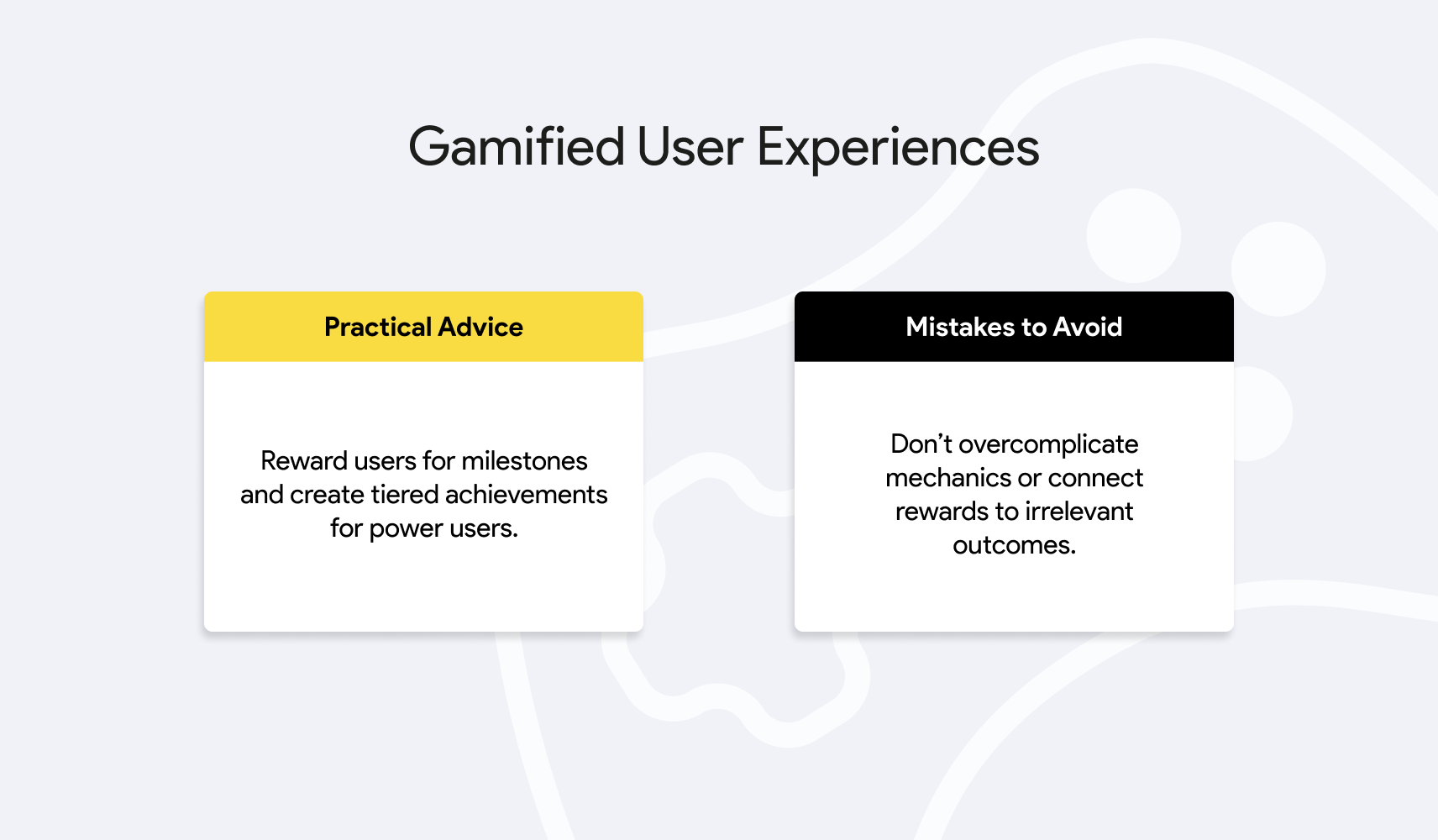
Localized Marketing and Support
Expanding globally requires B2B SaaS growth strategies that prioritize localization, compliance, and culturally relevant engagement.
Tailoring content, user experiences, and customer service to specific regions improves engagement, trust, and adoption. In 2025, businesses will invest more in region-specific messaging, multilingual support, and culturally relevant UX to drive sustainable growth.
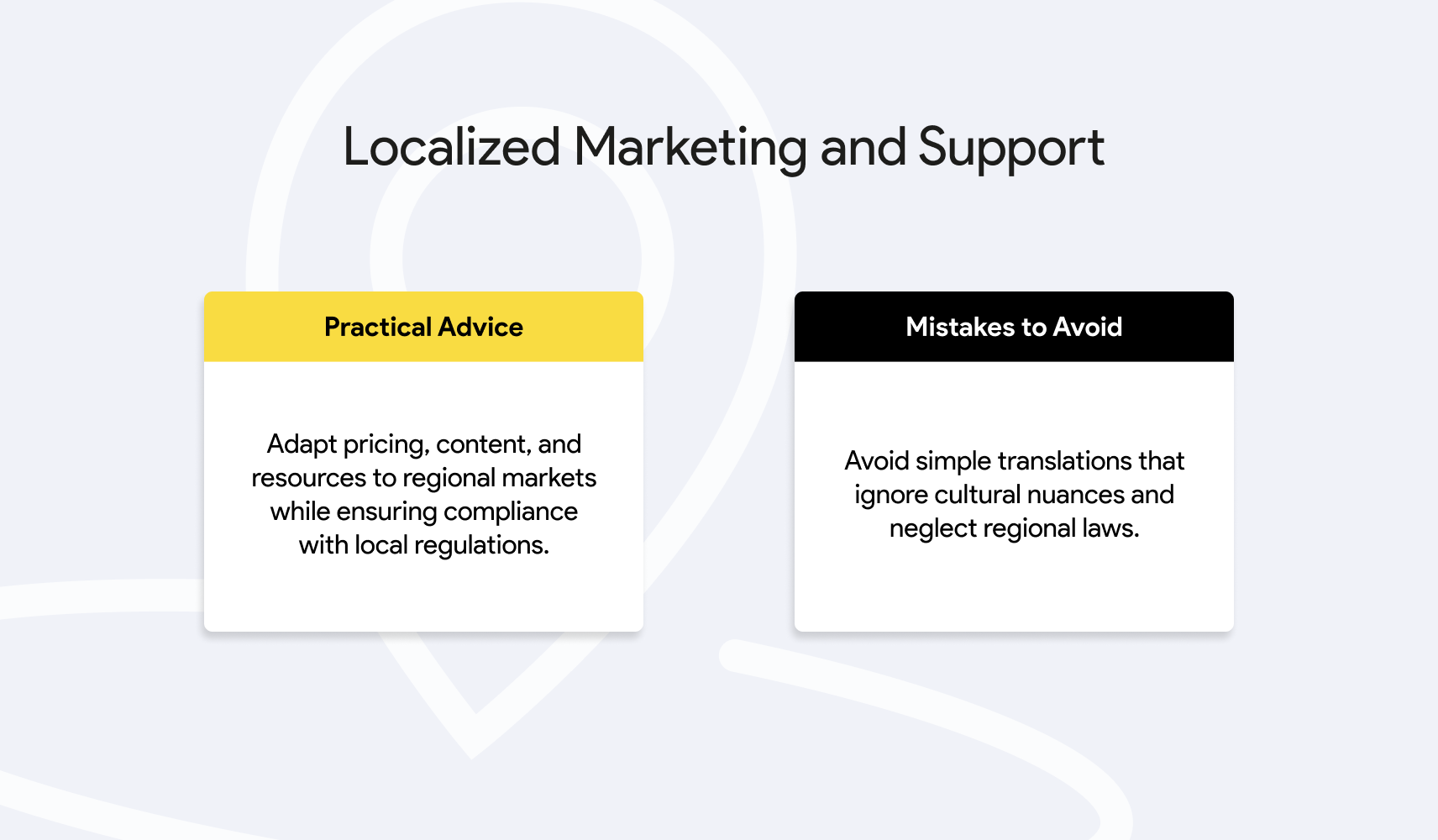
Community-Led Growth
By fostering active discussions, peer support, and user-generated content, SaaS companies can create stronger brand loyalty and organic expansion. In 2025, businesses will increasingly invest in building engaged communities through forums, events, and advocacy programs.
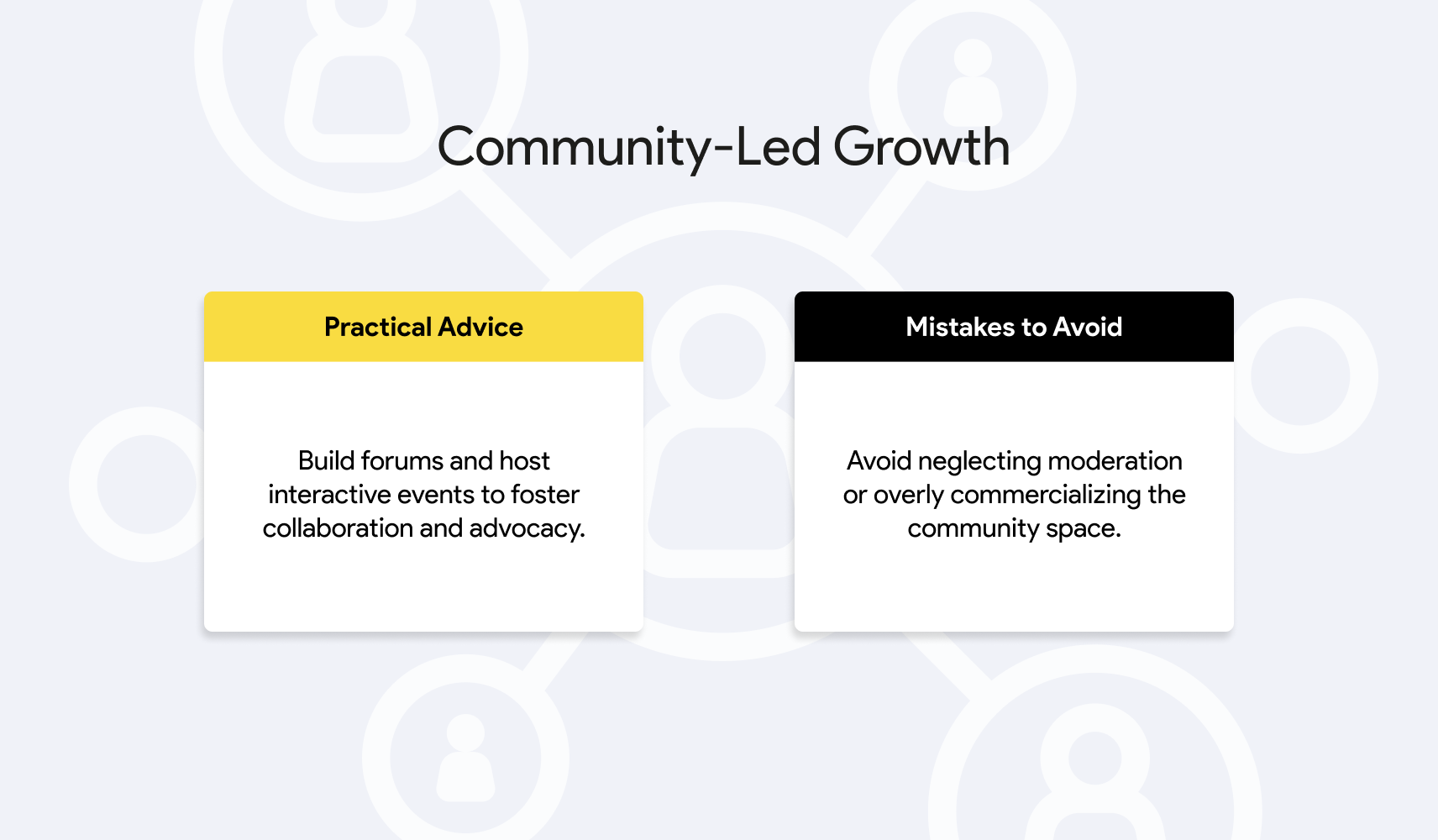
Hyper-Focused Vertical SaaS Solutions
Unlike broad SaaS platforms, these solutions provide deep domain expertise, regulatory compliance, and industry-specific integrations. In 2025, the demand for vertical SaaS will continue to rise as businesses seek more precise, high-value solutions over one-size-fits-all software.
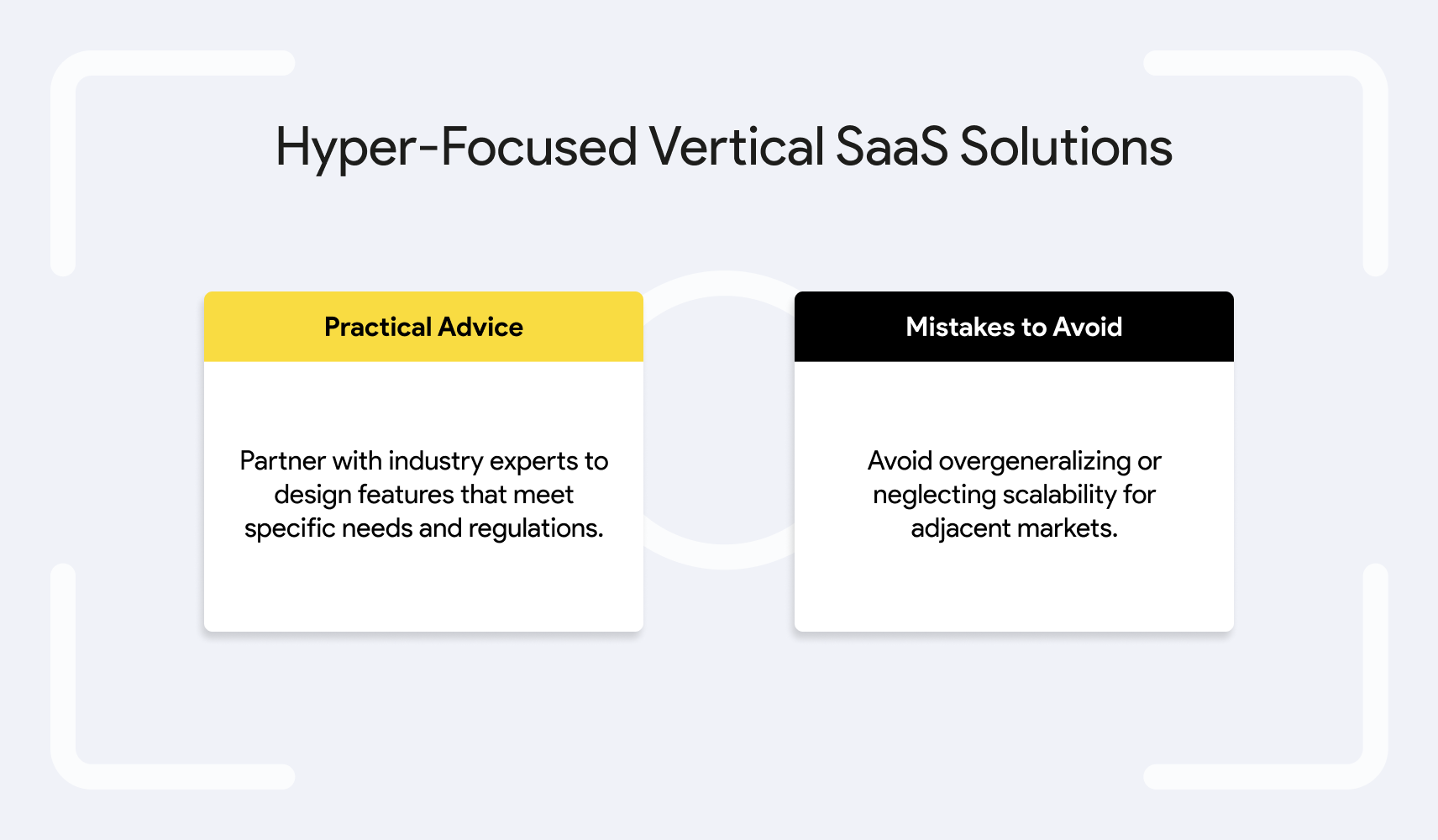
Proactive Security and Compliance
Security and compliance are becoming essential as regulatory requirements and cyber threats evolve. In 2025, businesses that prioritize transparency, data protection, and regulatory alignment will build stronger trust and reduce legal vulnerabilities.
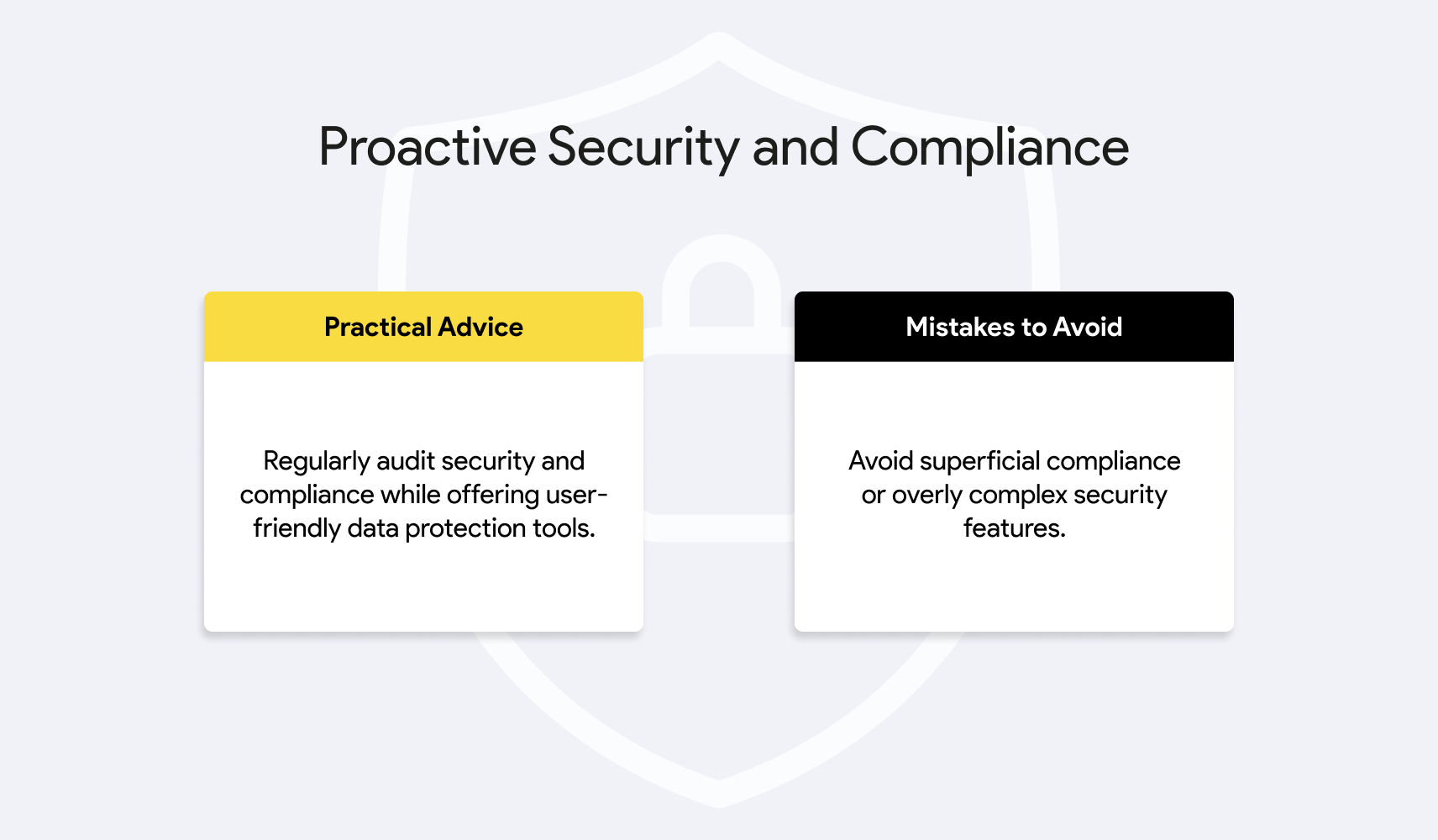
Conclusion
The SaaS industry in 2025 will reward companies that embrace innovation while maintaining a relentless focus on customer value. Leveraging trends, expert insights, and avoiding pitfalls directly impact SaaS growth strategies, boosting user engagement and competitiveness.
Success in 2025 will depend not just on following SaaS growth trends but on executing them through thoughtful design and seamless user experiences.
Our SaaS design expertise helps businesses translate complex strategies into intuitive, high-performing products that drive engagement and growth. If you’re looking to refine your product experience and stay ahead of the curve, let’s talk.
